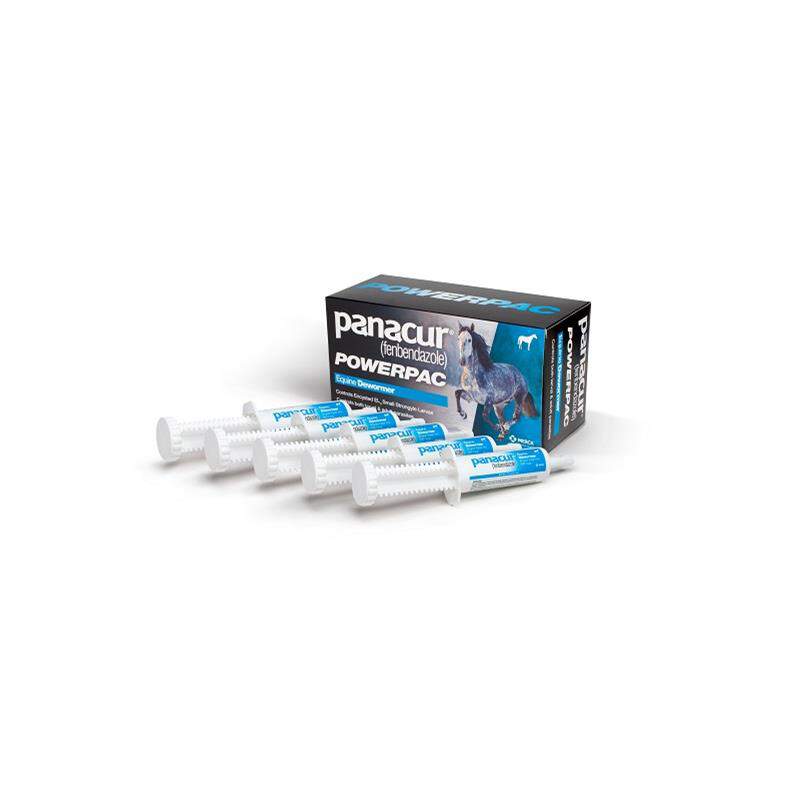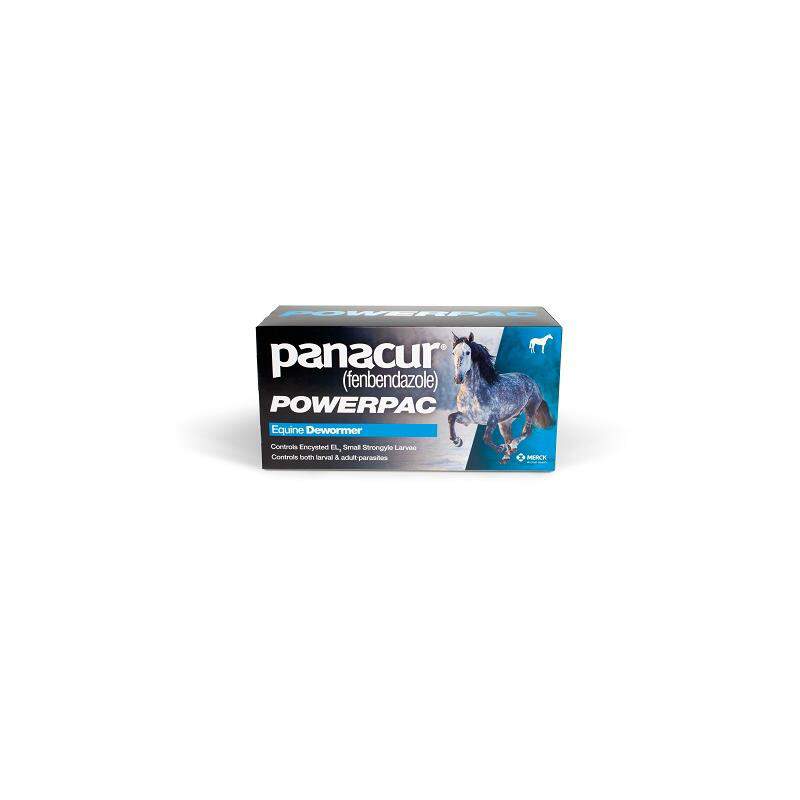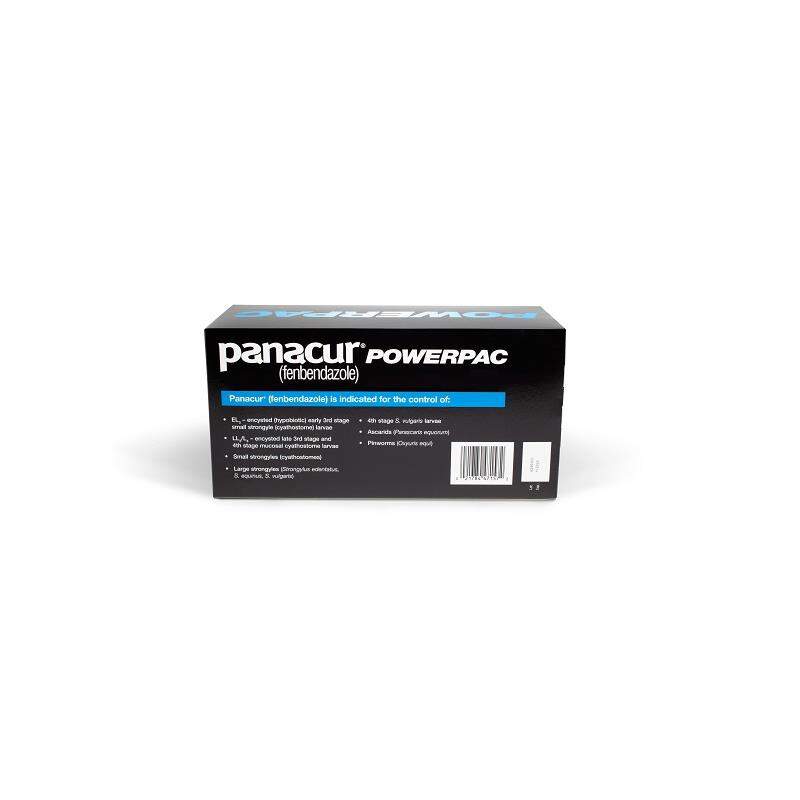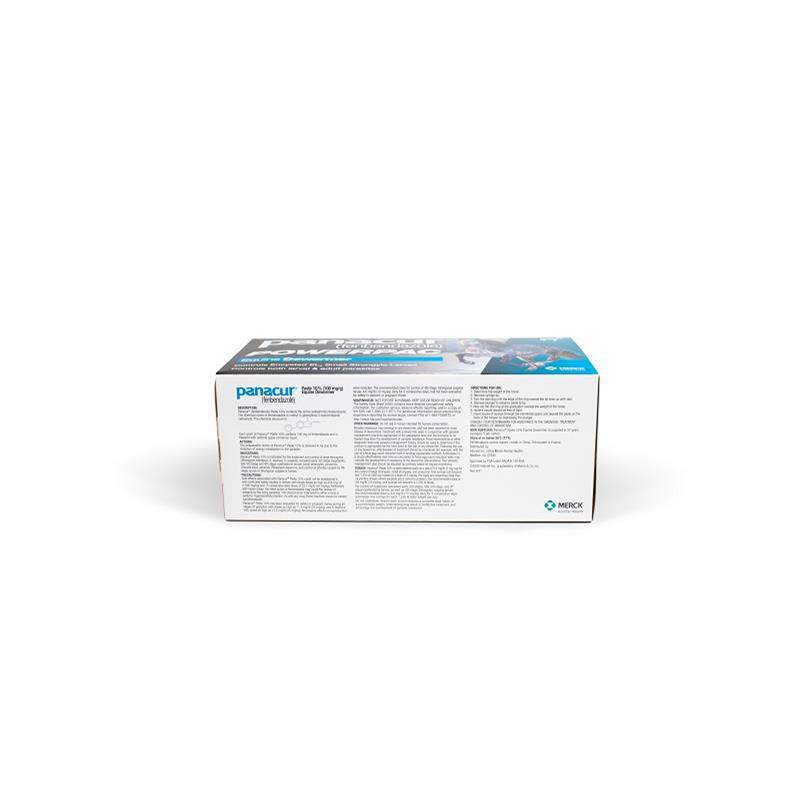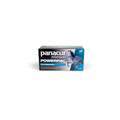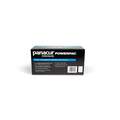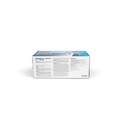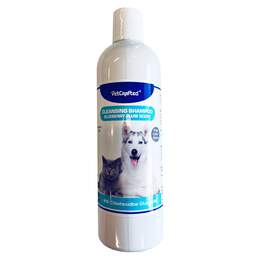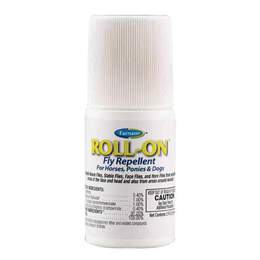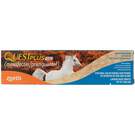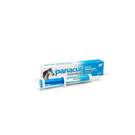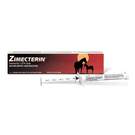Click on image to open expanded view
Item No.
10091
Product Description
The unique method of action of PANACURPOWERPAC makes it effective against even the most serious parasites. Pregnant mares, elderly horses, and foals are all safe to use. It is the only treatment approved by the FDA to treat all phases of encysted small strongyles, in addition to efficiently treating a variety of parasites. Ivermectin-resistant ascarids are also treated with PANACURPOWERPAC. To achieve a larvicidal dosage, use one tube every day for five days.
Who is Panacur PowerPac for?
Horses
Why use Panacur PowerPac?
This drug works to treat a wide spectrum of parasite illnesses, including larval and adult stages. It is a larvicidal approach that has been approved. The apple cinnamon taste of the orally given medication is appealing to animals.
How does Panacur PowerPac work?
The suppression of parasite metabolization is assumed to be the mechanism of action of fenbendazole. This prevents the parasite from continuing to produce energy, thereby ending the parasite's life cycle.
Manufacturer:
Merck Animal Health.
Active Ingredients(s):
Panacur® (fenbendazole) Paste 10% contains the active anthelmintic, fenbendazole. The chemical name of fenbendazole is methyl 5-(phenylthio)-2-benzimidazole carbamate.
How is Panacur PowerPac sold?
Panacur® (fenbendazole) Paste 10% Equine Dewormer is supplied in 57 g syringes, 5 per carton.
What are the side effects of Panacur PowerPac?
There are no known reported adverse reactions from this product.
What special precautions are there?
When using trichlorfon together, exercise caution and read the manufacturer's instructions and guidelines carefully before starting.
What to do if overdose?
If overdose occurs, please contact your local pet hospital or emergency pet clinic immediately.
How can I store Panacur PowerPac?
Store at or below 75°F (25°C).
Helpful Tips:
Regular dosing every 6 to 8 weeks may be necessary to avoid re-infestation. On the first of December, February, April, June, August, and October, dewormer should be given. For assistance in identifying an infection, subsequent treatment choices, and treating parasite problems, see your veterinarian.
Overview
The suggested dose for controlling hypobiotic (encysted early third-stage) cyathostome larvae, late third-stage cyathostome larvae, fourth-stage cyathostome larvae, and fourth-stage Strongylus vulgaris larvae is 4.6 mg per pound of body weight for five days. For every 1250 pounds of body weight, one syringe should be used every day. The suggested dosage for weanlings or foals under the age of 18 months (who are particularly susceptible to ascarids) is 4.6mg per pound of body weight. A single injection can treat a horse weighing up to 1250 pounds. 2.3mg per pound of body weight should be taken orally. A single injection can treat a horse weighing up to 2500 pounds. 1) Weigh the horse to ensure accurate dosing. 2) Discard the syringe's tip. 3) Rotate the dial's ring until the ring edge closest to the tip is at zero. 4) To move the paste to the tip, depress the plunger. 5) To avoid underdosing, set the dial ring to the graduation closest to the horse's weight. 6) Make sure the horse's mouth is free of food. 7) Place the syringe nozzle in the interdental area, then depress the plunger to discharge paste on the back of the tongue.



